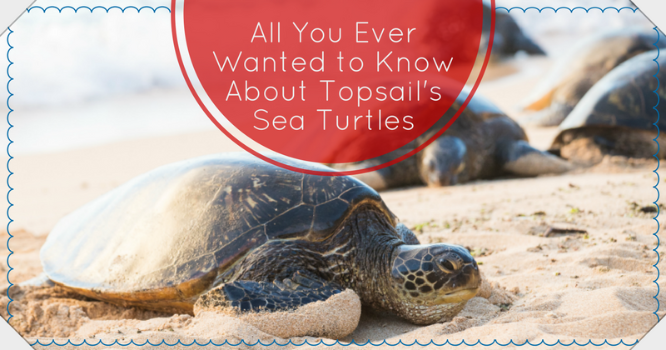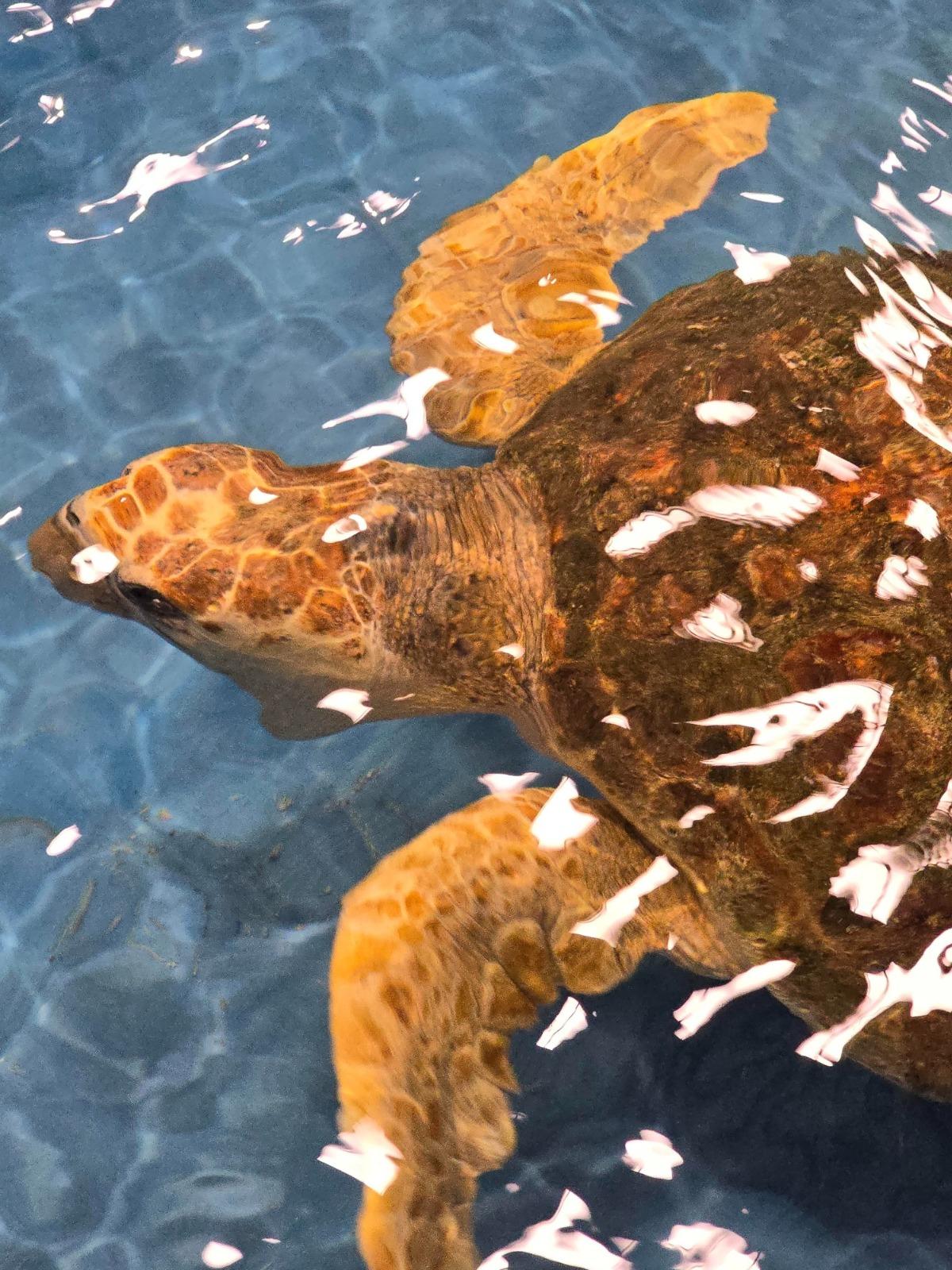
Did you know that when you vacation in Topsail Island, you are also visiting a sea turtle sanctuary? Read on for a quick summary of general sea turtle facts as well as some information specific to your upcoming North Carolina beach vacation.

General Information About Sea Turtles
Sea turtles are one of the oldest living species on this planet. In fact, scientists have discovered a sea turtle fossil that dates back 120 million years. Although the species once roamed around the world's oceans in large numbers, increased human demand for their meat, skin, and eggs has caused the sea turtle population to dwindle over the past 100 years.
Sea turtles inhabit tropical and subtropical waters around the world. Their torso consists of a hard-upper jacket called the carapace and a soft lower section called plastron. You may also be surprised to learn that sea turtles do not have teeth. However, with their beak-like jaws and long necks, they can create a strong force to snap their prey and eat their food.
Sea turtles come in all sorts of colors, shapes, and sizes. For example, the olive ridley species commonly weighs less than 100 pounds while a leatherback sea turtle can weigh up to a colossal 1300 pounds!
With the occupation of the human race across vast landscapes as well as increasing amounts of environmental pollution, this species is finding it harder than ever before to survive and thrive. There could even come a time when this beautiful traveler of the sea is hard to find in the natural world and may instead wind up as simply an attraction in aquariums.
Topsail's Sea Turtles
The sea turtles that inhabit the waters and beaches in and around Topsail Island and Surf City include green, leatherback, hawksbill, and loggerhead turtles. On some occasions, kemp's ridley sea turtle nests have also been seen on Topsail Island. The kemp's ridley sea turtle is one of the rarest and critically endangered kinds of sea turtles on the planet.
Topsail Island, off the coast of North Carolina, is a nesting ground for all these types of sea turtles, which come ashore to lay their eggs between three and five times during their nesting year. A female sea turtle will return to the beach of her own birth to lay her eggs no matter how far she may be.
The second challenge for the hatchlings to survive is to make their way to the water. These tiny animals only weight a couple of ounces at birth, thus making them vulnerable to predator animals such as ghost crabs, birds, or fish.
Hatchling sea turtles navigate by using the light of the moon to guide their way. The people working to preserve the nests of sea turtles of Topsail Island advise tourists and home owners not to use bright lights and to keep curtains drawn at night during nesting season because hatchlings may confuse the brightness from artificial equipment with moonlight. This may cause the hatchlings to travel in a direction away from the water, a scenario that will almost certainly prove fatal to the small creatures.
Preservation Efforts
Every day volunteers who are passionate about the preservation of Topsail Island sea turtles patrol the twenty-six miles of beach making sure that the nests are protected and unharmed. When the hatching time is near, the volunteers clear the area between the nests and the water so that the hatchlings can easily make their way to their destination and start their journeys. Volunteers look for holes to cover, seaweed to clear, and remove any trash in the vicinity.
This facility was a brainchild of a young girl who one night saw a mother sea turtle make her way to the beach, lay her eggs and disappear back into the depth of the ocean. The little girl stood near the nest the whole night to protect the eggs and the next day she determined to protect this species from any harm. That young girl was Karen Beasley.
What (Else) Can YOU Do To Help Topsail's Sea Turtles?
In addition to the things mentioned throughout this post, there are several other important things that you can do to help protect Topsail Island's sea turtle population.
- Remove all trash! Sea turtles have super tiny brains and are not capable of distinguishing between a plastic bag floating in the water and a nutritiously delicious jelly fish. They will eat your trash (or get stuck in it!), and it can kill them.
- Be aware of your surroundings! If you are boating, watch out for these creatures swimming along in front of your vessel. If you are fishing (especially with nets), be careful not to unintentionally catch a turtle!
- Refill all holes and/or trenches that you may have dug! In addition to light reflecting from the surface of the water, sea turtles use the slope of the beach to find their way to the water. They may also fall into and get stuck in holes that are between their nest and the ocean.
- Remove all items from the beach each evening! While it may be tempting not to have to haul all your stuff back and forth to your Topsail Island rental each day, it's important to do it anyway. Items left on the beach may confuse or deter a nesting female, or cause her to lay her eggs in a less-than-ideal location.
Thank you for your interest in learning more about some of Topsail Island's greatest natural assets. We hope you use the information in this article to help make your next North Carolina beach vacation your best vacation yet!
Did this article help you learn something about sea turtles? Please SHARE it using social media and help others learn all about them too!




